When you start to plan your Timber Frame project, one of the biggest questions you’ll have to answer is what species of wood you want to use for your frame. The wood species you choose will affect the price of your frame, the dimensions of the wood members, and other structural and engineering characteristics. So deciding what species of wood is right for your frame and for you is a decision that needs to be made early in the process. Today we’ll look at some wood species that are common in Timber Framing and a few that aren’t used as often but are still options to consider.
Douglas fir
Fir is an excellent wood for highly finished post & beam frames and commercial work because of its strength and beautiful grain. It is one of the most abundant wood species in North America and is one of the most popular choices for Timber Framing. Its color ranges from light red to pale yellow. We buy our Douglas fir timbers directly from west coast suppliers who select only the best looking timber. Douglas Fir is available free of heart centers, which means that the usual “bull’s eye” heartwood found in the center of most timbers is absent. Free of heart timber is less prone to checking and is more stable than timber which does have heartwood. We don’t recommend having your Douglas fir hand hewn because when you try to create that finish with Douglas fir it tends to peel and doesn’t look its best.
Hemlock
Hemlock is a great economical wood for country homes and barns. It is pale in color and naturally develop a richer appearance over time. It looks great rough sawn and hand hewn. Hemlock is very strong, has a long grain and is a renewable resource. It is resistant to rotting and it is also much less expensive than Douglas fir. However, certain stands of hemlock can have a defect called shake. Shake is a delamination between the timber’s growth rings. We order our hemlock shake-free. However, shake will often show up after a timber frame has been up for a year or so. Shake in timber frames is generally not a structural problem. Our engineers design frames that can account for shake, checks and other movements of the wood over time so shake in Hemlock is generally not a structural concern and it can make a post & beam frame look rustic.
White Pine
Pine is a very stable wood. It has a good straight grain, can be easily stained, planes well, and is a great wood for hand hewing. Because it is less expensive than Douglas fir, it is often used for residential timber frames. It is similar in color to hemlock – a pale yellow with occasional reddish streaks. Pine is not as strong as hemlock or fir, so it is not a good wood when long spans are required or when smaller beams are desired.
Oak
Oak is a very strong & beautiful hardwood. It tends to be more expensive than pine or hemlock, but less expensive than Douglas fir. Hardwoods, in general, are not as stable as softwoods, which means they tend to twist and check more. Oak, in particular, is subject to surface checking – when a timber gets many little, tiny splits & cracks just on its surface. Heart checks are also prevalent in oak. Some of our clients love that the oak is native to our area, and the timber doesn’t have to travel as far to get to our workshop to be finished. There are different types of oak: white, red, and mixed. White oak is very weather resistant and Red oak is a little redder in color than white oak. Mixed is exactly as it sounds, a combination of red and white. Ordering mixed oak saves time and money.
Cedar
Cedar is a naturally white or red colored wood. It can be stained with a natural oil, or stained dark depending on the owner’s preference. Cedar is naturally rich in oils that preserve the wood when exposed to the weather, making it perfect for exterior use. Cedar is naturally resistant to rot and to insects as well, making it an especially hardy and long-lasting wood.
Cypress
The Cypress trees generally grow in warm, wet climate. They are a common southern tree and have a distinctive look and odor when they are cut. Younger Cypress trees are moderately hard, stable, and strong, and are resistant to decay so they are good for indoor and outdoor use. The wood contains natural preservative oils so it can last for a very, very long time. Cypress holds resins and glues very well. It also planes well. It is less expensive than Douglas fir and is comparable in price to Oak.
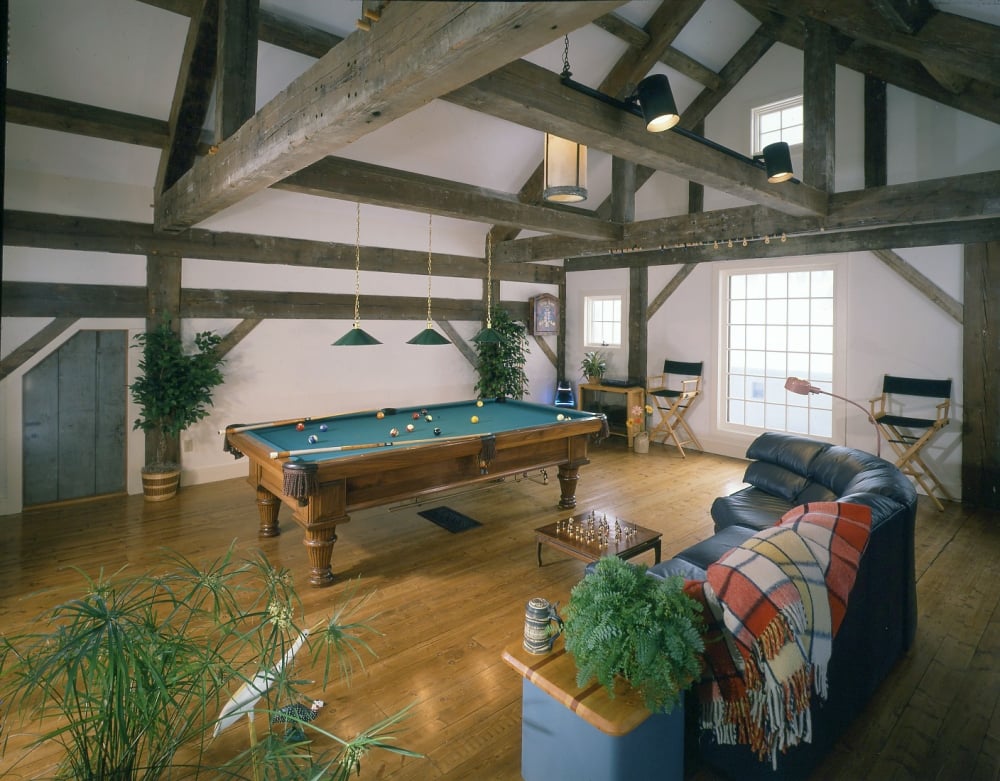
Antique Southern Yellow Pine Timbers re-fabricated from an old dairy barn make a great wooden ceiling for this game room.
Reclaimed
Reclaimed Wood is timbers that have been taken from old buildings such as barns, mills, factories and other structures. People love reclaimed wood because it is recycled, making it a green building material, and because it has a very specific look to it. Because reclaimed wood is generally old growth timber that has often been aged for 100 years or more, it has a beautiful tight grain which can be exposed by resawing the pieces. It also has a lot of rustic or vintage character when it’s used as is. When we place an order for vintage wood, we specify either “hand hewn” timber or “resawn” timber. The resawn timber is cut with a band saw to our requirements. The hand hewn timber comes to us as is, and we scribe it to fit into a timber frame. Reclaimed antique timber frames are very beautiful, very special, and also very expensive.
Glulam
Glulam beams are made from small sections of wood cut into strips and then glued or laminated together, creating a strong and stable wood product that can be used to stretch over great spans. It is a good options for clients who want to avoid the checking, the shakes or other natural variations and inconsistencies of natural timber. It is also a good choice for those who want long graceful curved beams.
Think Function First
So when deciding what wood species to choose, think about how you want your structure to function. Are you building a wide and long factory that needs arches that can stretch a great span or a smaller storage barn? You should also consider how you’d like your structure to look. How do you feel about checking, grain, color, and texture? Think about the big picture and what wood will best serve your needs.
When considering your wood species, you should also consider finishes, stains, and if you’d like your timber weathered or not. You have a lot of control over how the frame will look as you consider the many combinations and options to choose from. For example, rough sawn oak with a golden stain will look distinctly different from planed and chamfered Hemlock that has been weathered.
Do you have questions about wood species or need suggestions on what to chose? Submit a question on our ask the experts page or comment below!

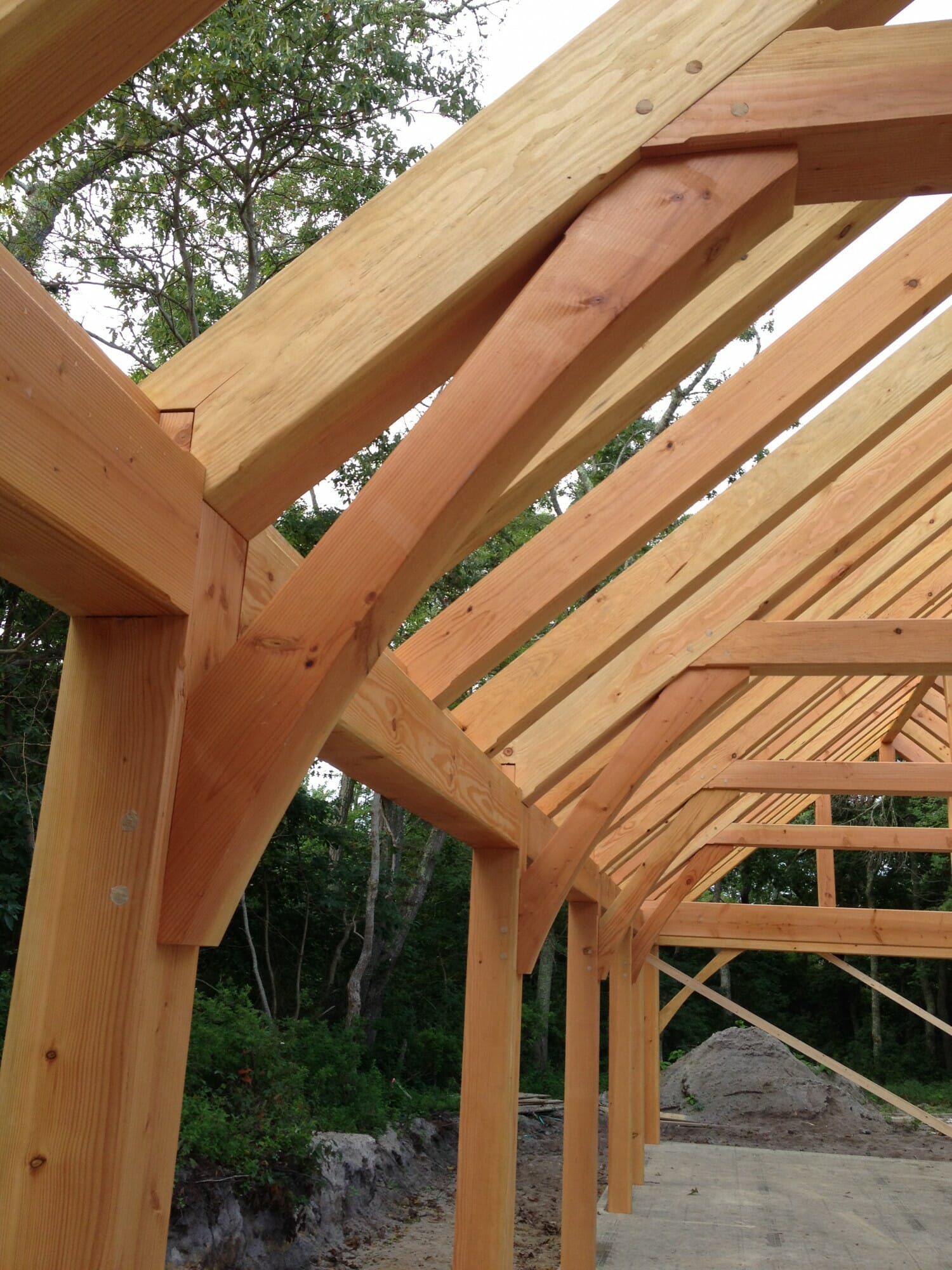
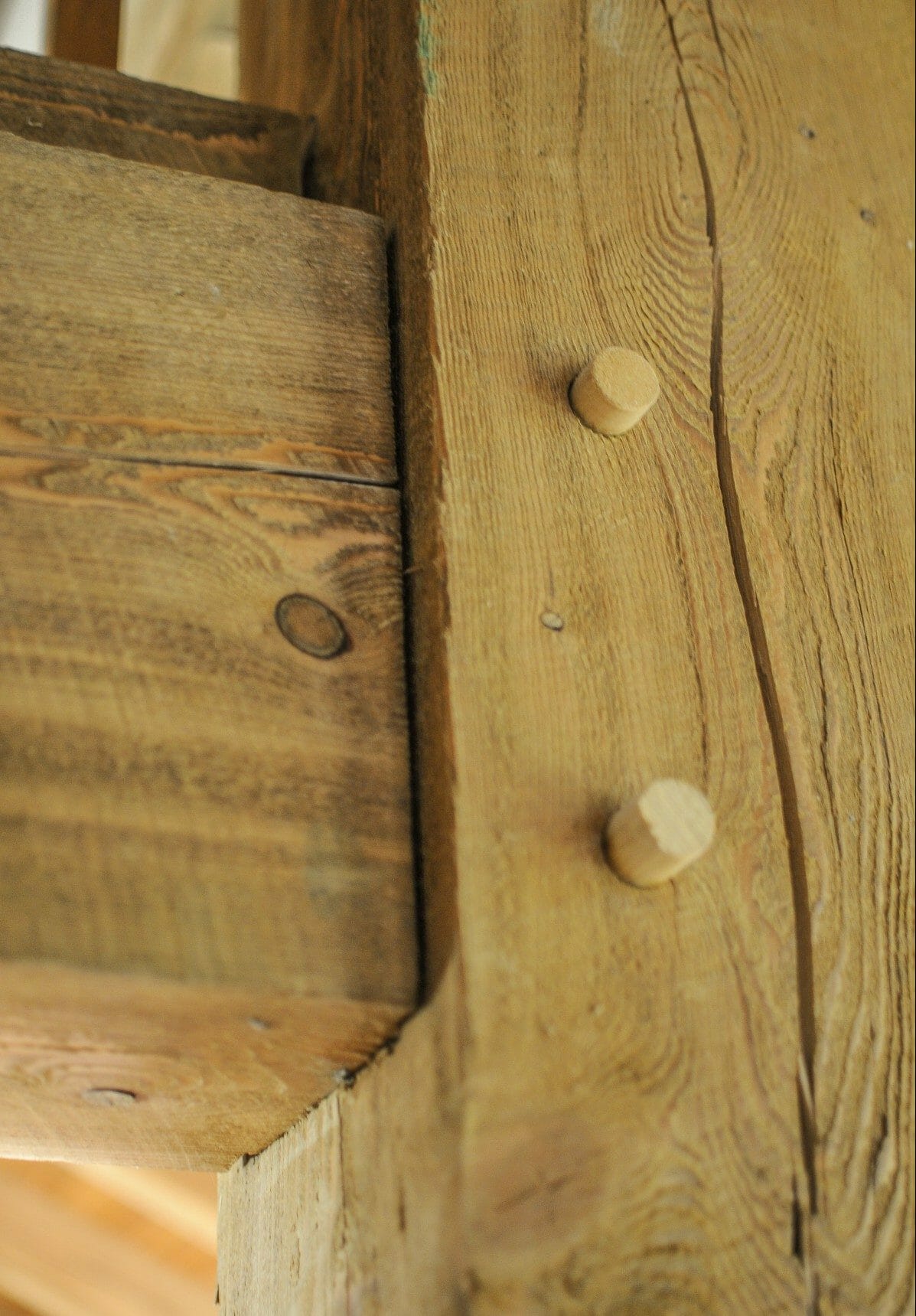
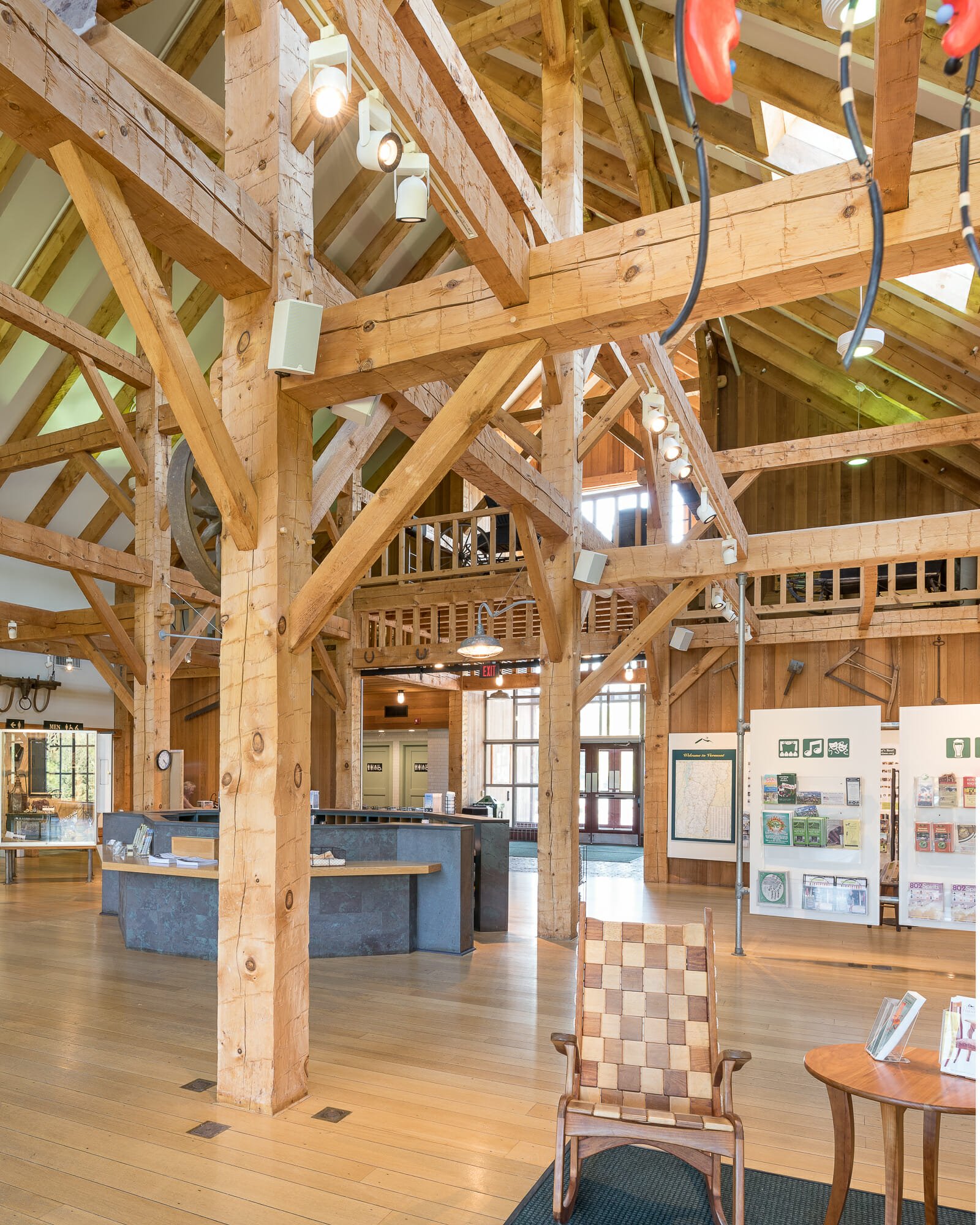
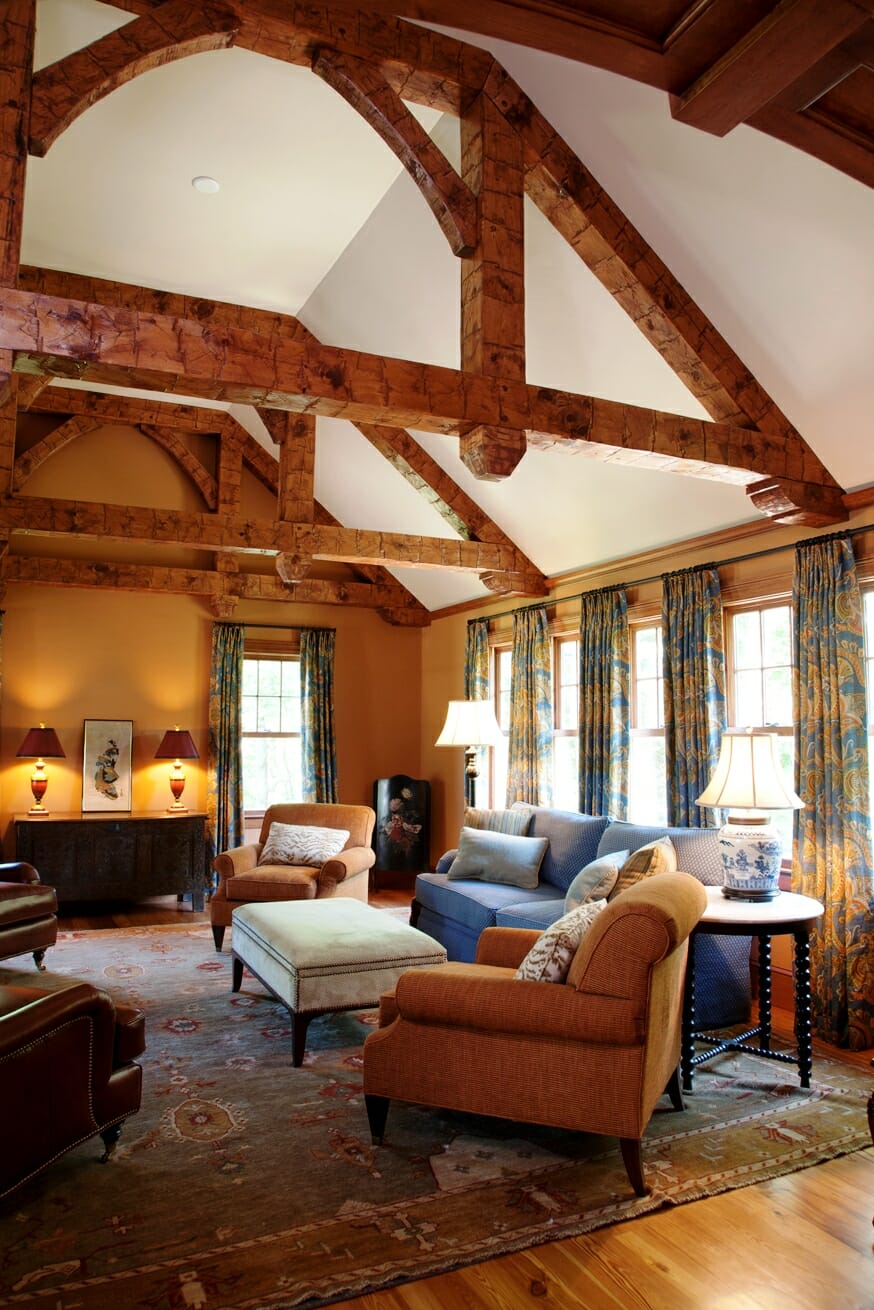
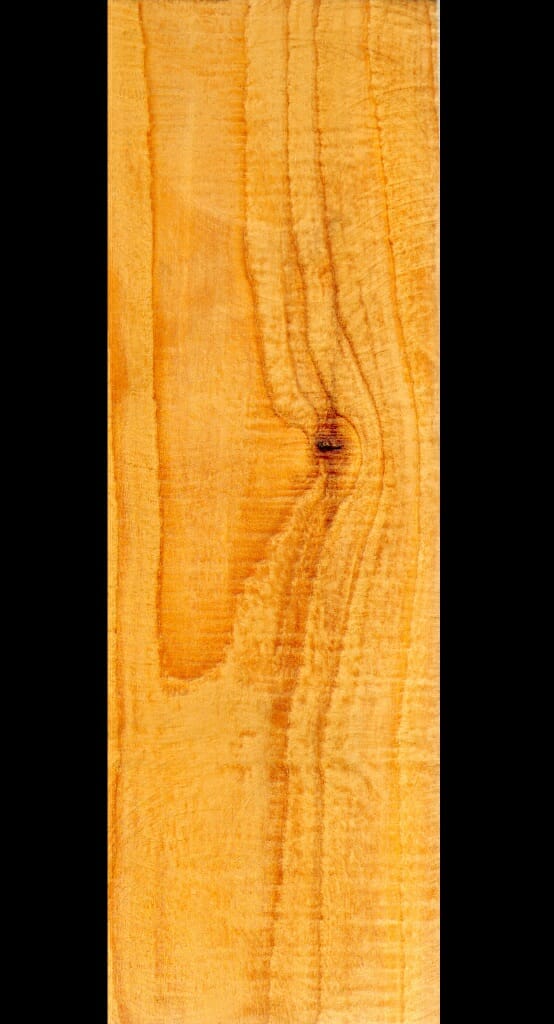
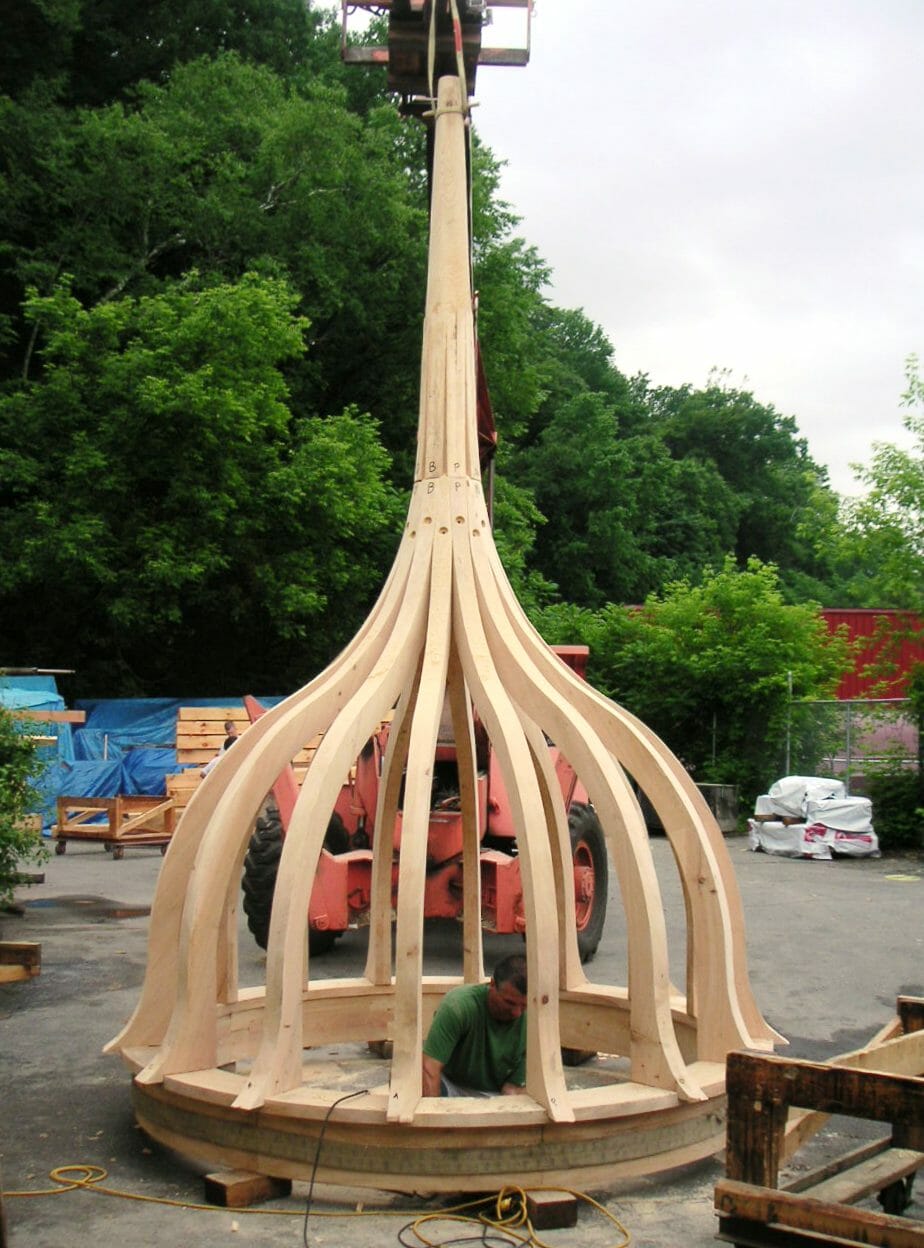
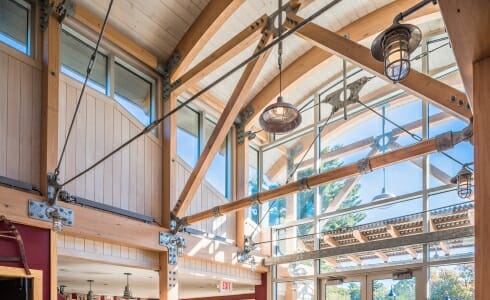

Nice Article, thank you for sharing, and so much for this information.
Im thinking about build a house in vermont with southern yellow pine post & beam. Do you think think that SYP is a good option
Hi Andrei,
Thanks for your comment. Southern Yellow Pine is a good, cost-effective option. And I personally really like the way it looks. Good luck with your house!
Thanks,
Caitlin
Very informative about different kinds of wood, Timber and Pole Barn builds and the distinct differences between them. Thank you for all your facts and information. Very, very helpful. Will use this to help in my barn build. God bless you all.
I’m looking to do a post and beam frame, with SIP panels for a seamless exterior wall and thermal envelope.
Looking to build in Northern Utah, where the summers are super-dry, and the winters are spotty and very humid.
What’s the best wood to take stain, and keep a clean, easy-to-maintain finish, long-term?
Is White Fir Okay to use for outdoor Shade Covers?
I have some red pine I will be cutting down. Can I build a post and beam structure with Red Pine? Are there significant concerns I should be aware of?
Very informative and to the point. My property in central Vermont has quite a few knotty (but big and straight) hemlocks and an almost unlimited amount of red spruce and some balsam fir (but the spruce are mostly only under 12-16” dbh). Can red spruce heartwood be utilized? What about eastern fir species (again, of course they’re lacking in dbh)? I’m trying to mill this wood to build a cider barn in the 36×48 range. Any hope I can use the spruce, or should I go with the hemlock? I’ve heard spruce makes good siding if not structural timbers.
Hi Paco,
Pretty much any wood species can be used to build with. They all have their own unique characteristics, strengths and weaknesses. Spruce tends to twist and check more than hemlock or pine. It is about as strong as hemlock and much stronger than pine, but not as strong as douglas fir. Hemlock is more rot resistant than spruce or pine, but as long as they are kept dry, none of them will rot.
For a cider barn, hemlock is the best bet if you have it, otherwise, if you can get the sizes and grade you need, spruce will be fine. The grade is important. We always specify #1 & better no matter which species we use. More on timber grading can be found here: Shake & Checking and at https://www.nelma.org/ .
Thanks,
Caitlin
Ahh, thank you very much. I will need two structures; a basic pole barn equipment shed in the next year or two, then the much larger cider barn (timber frame) not for another 5-6 years when the apples are ready.
How about Larch and Balsam Fir? Any use there? After closer look the majority of my mature (up to 20″) softwoods are balsam fir , not spruce. The pole barn will be DIY, but for the Cider Barn would Vermont Timber Works mill logs on site, or bring ’em up finished? I’m looking at a way to utilize my own timber during this period of high lumber prices. As for grade just by looking at them my hemlock appears to be lower grade than both the fir and red pine; hemlock is not quite as straight with more branches which I imagine will become knots when milled up.
Hi Paco,
If you want to give us a call at 802-882-1917 I can put you in touch with one of our sales reps who would be able to discuss this with you, as the answers might be more complex and depend on a few factors and what exactly you have in mind. Or you can email us at [email protected]
Thanks,
Caitlin
Wah! I never heard of these brand/wood before, thanks for introducing us to them.
Can you build with ash?
Hi Todd,
Ash is a hardwood and would be fine to build with if one could find the trees to cut the beams from. It is not commonly used in timber framing.
Thanks,
Caitlin
I have a property in Pennsylvania where I want to build. Ash is the predominant wood – lots of it – but many of the trees are dead or dying from the Emerald Ash Borer. Can I harvest dead ash trees for my timber beams or do I need to harvest live and dry out?
Hi Ben,
As long as the timber is sawn at a mill with a grader, it will be fine. We use NeLMA
Thanks,
Caitlin
I have property in southeast Kansas where I want to build a post & beam cabin. There may be some Kentucky coffee tree would available from nearby that I can purchase. I looked up in the wood data base and it seems it strength and rot characteristics are as good as Oak. What do you think.
Hi Doran,
I’ve never heard of Kentucky Coffee Tree before. You might want to consult with an engineer who’s familiar with it to make sure it’ll work for your project.
Good luck!
Caitlin
We are building a house in Texas Hill Country and our plans call for interior beams and exterior beams, trusses and exposed rafters. We are trying to decide between western red cedar, Douglass fir or cypress. Exterior will be structural and interior will be decorative. Would appreciate your counsel.
Hi Rick,
Douglas Fir is great for the inside beams. We used it for exterior work for years, but it is prone to rotting, so weep holes need to be drilled in the mortises so they drain well and it is important to keep up with staining and painting. Lately, we have been using Port Orford Cedar for exterior beams. Cypress is very rot resistant too, but it is harder to get. Western Red Cedar works well outside, but it is more expensive.
You can see more about wood species here: https://www.vermonttimberworks.com/learn/wood-finishes/
Thanks,
Caitlin
I’d like to discuss this with yiu. I recently moved to north carolina from Ct. and i’m about to start building a new home. In ct we use doug fir. here in nc they use a ton of yellow pine and spruce.
I am concerned about using something that will twist the and bow before i get the walls sheetrocked.
plese off me the best options. and also what your company thinks about shopping down her if i were to place a very large order. the home is 8000 sq feet plus.
would it make sense to order and pay for shipping this distance
Hi Joe,
I think it would be easier if you talked to our Rep for North Carolina who would be able to answer all your questions and work on a quote for you if you want. Could you email Greg at [email protected]?
Thank you,
Caitlin
I’m building a Timber Beam cover over my deck in Eastern Washington, I have the a bunch of 2×6″ T&G Blue Pine I was thinking of using that on the open ceiling and then putting metal roofing on top. My question is will it be strong enough to screw metal roofing screws into for the metal roof.
Hi Nicholis,
Your best bet would be to contact a local engineer who is familiar with that wood and your local building codes. They should be able to help you with that.
Thanks,
Caitlin
Maybe I missed it somewhere but do you have an idea of which species is the most durable, long lasting and best for harsher weather conditions?
Hi Dylan,
It kind of depends on how harsh the conditions are and in what way are they harsh. But we would usually say based on specific needs, either Doug Fir or Cedar.
Thanks,
Caitlin
What’s your opinion about using locally grown Larch from upstate New York in a 18×24 barn workshop garage?
We recently helped convert a country barn into a commercial kitchen and the frame was made out of White Pine. It was a great material to work with and I found it interesting that your blog mentioned it. Thanks for sharing 🙂
is american linden ok for timber framing a barn?
Hi Barry,
We have never used it. After a quick internet search, it looks like it’s design values are pretty low, so probably not a good choice for structural members, but maybe a good choice for decorative non-structural beams.
Thanks!